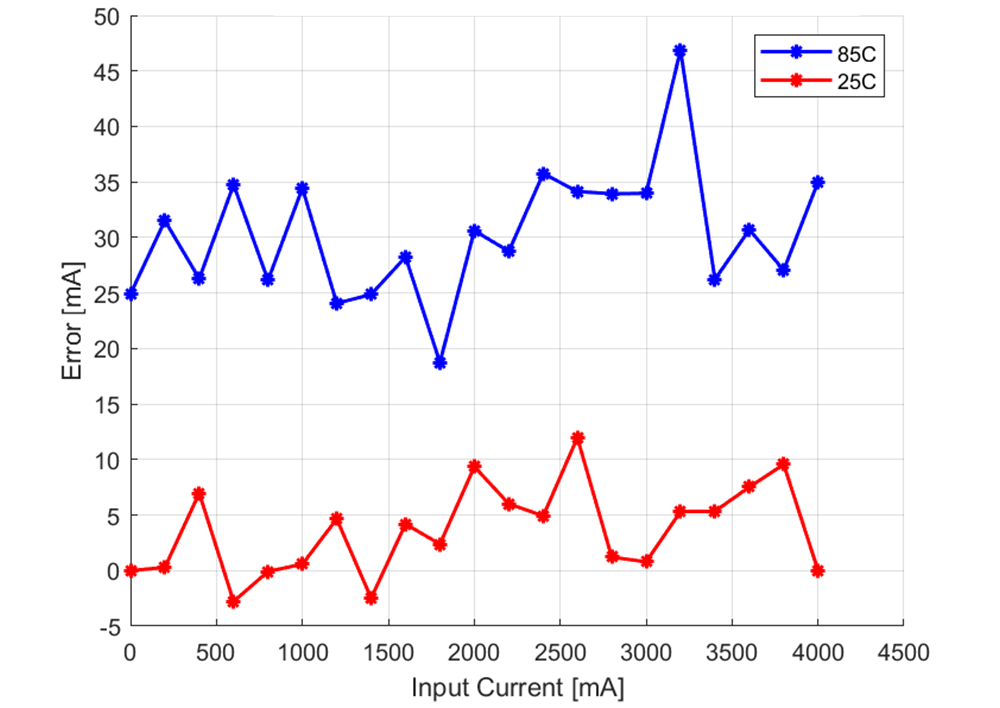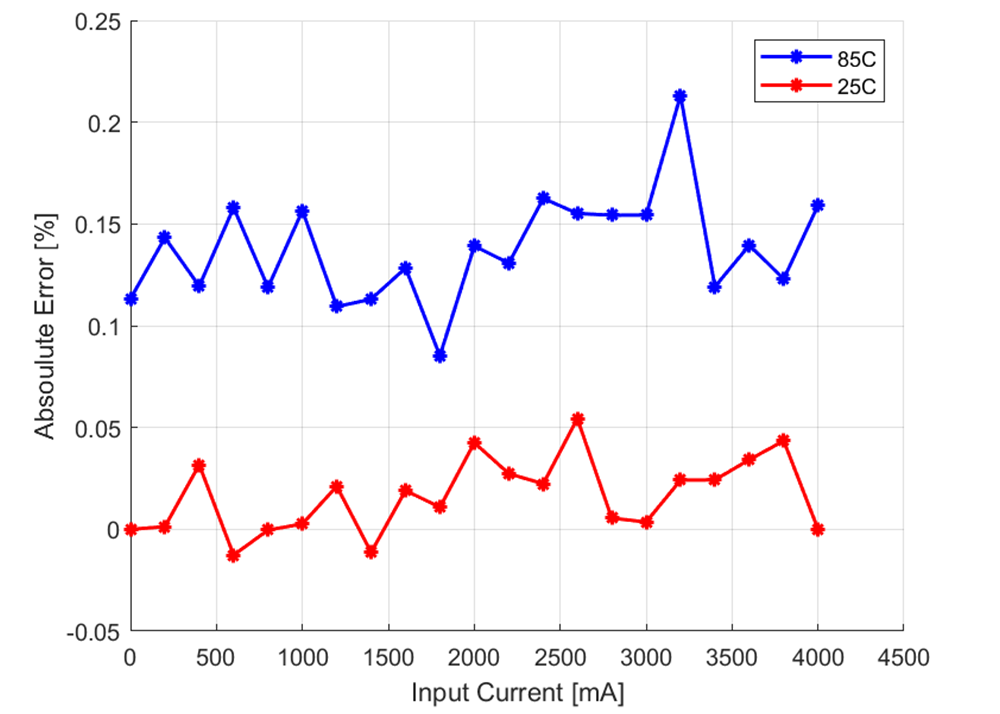TIDUF65 March 2024
- 1
- Description
- Resources
- Features
- Applications
- 6
- 1System Description
- 2System Overview
- 3System Design Theory
- 4Hardware, Software, Testing Requirements, and Test Results
- 5Performance Comparison with Competitor’s Device
- 6Design and Documentation Support
- 7About the Author
4.4.1.2 Linearity and Temperature Drift
In real systems, the ambient temperature usually changes significantly. The gain and offset of the sensor also changes with temperature, resulting in increased measurement errors. Calibration is necessary to improve test accuracy. In this section, the drift test is done under 25°C and 85°C, calibration is only done based on test data under 25°C.
 Figure 4-8 Linearity Error With
Calibration at 25°C
Figure 4-8 Linearity Error With
Calibration at 25°C Figure 4-9 Absolute Error With
Calibration at 25°C
Figure 4-9 Absolute Error With
Calibration at 25°CAt each test point, 1200 samples are records and averaging is done to filter out the noise influence. Under 25°C, after the calibration the maximum linearity error is 12mA which means 0.058% absolute error. When the temperature rises to 85°C, offset rises to 27mA. After calibration, the maximum error is 46.9mA which means 0.23% absolute error. The offset drift can be calculated using Equation 8:
Offset drift is close to the maximum value of the data sheet (35μV/°C), this is because the chip under test is an engineering sample, which is single-temperature-point trimmed. The mass-produced devices are multi-temperature point trimmed, which helps greatly improve the drift performance.